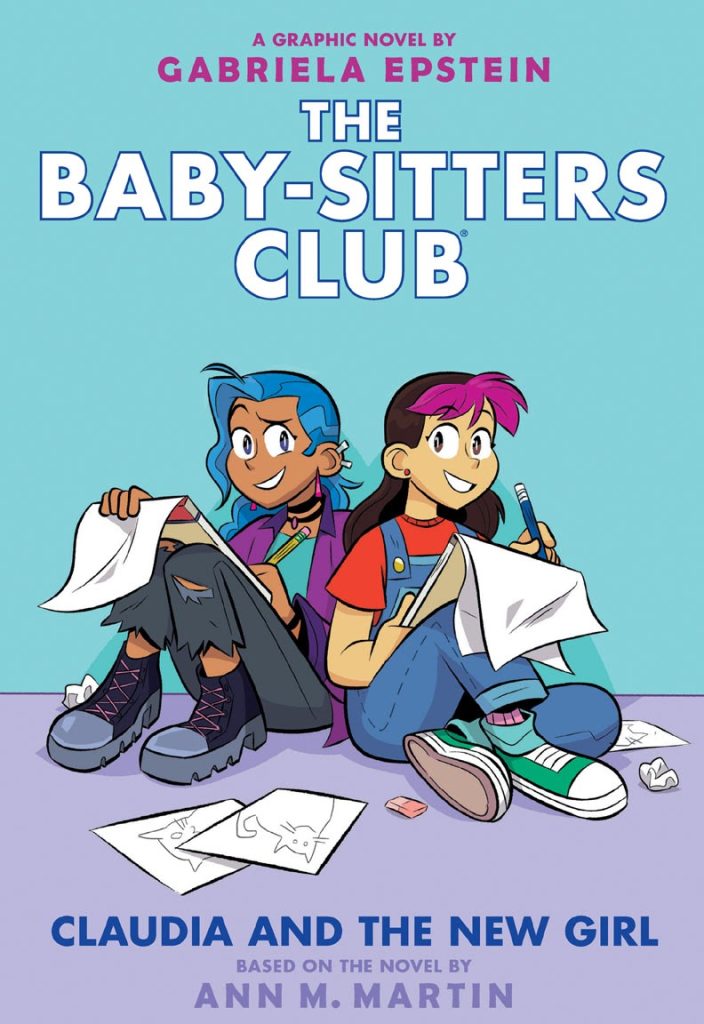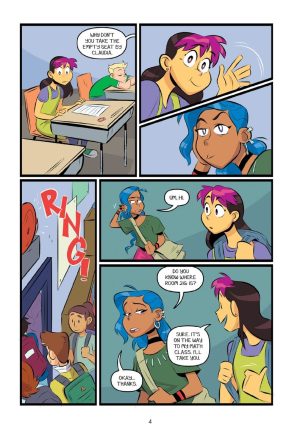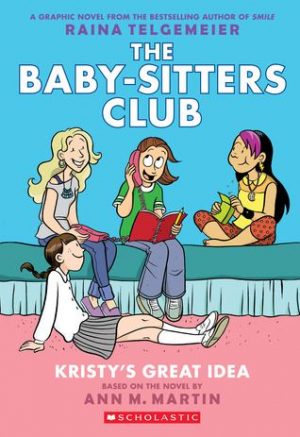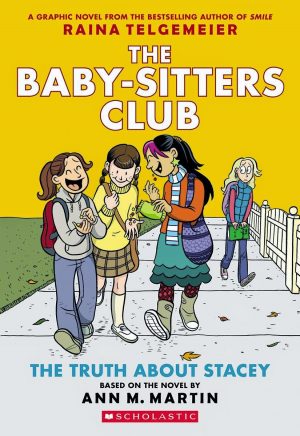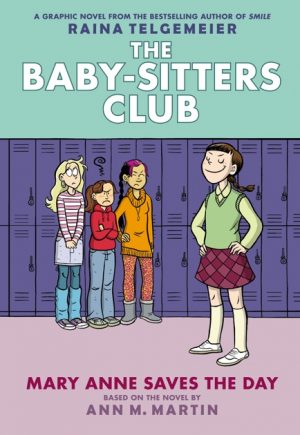Review by Frank Plowright
After four Baby-Sitters Club adaptations by Gale Galligan, it’s Gabriella Epstein who takes over for Claudia and the New Girl, skipping one of the novels from the previous illustrated outing Logan Likes Mary-Anne. Fans of the series shouldn’t worry they’re missing out as Kirsty and the Snobs is the next graphic novel.
Of all the prominent cast members Claudia is the most artistic, the story beginning with her not listening during class, preferring to doodle. However, her attention is taken by a new arrival at the school. Ashley Wyeth also dresses distinctively, and there’s an immediate bonding over a shared love of art.
There’s no need to follow The Baby-Sitters Club graphic novels in any kind of order as Ann M. Martin’s original plots always ensure a new reader can pick the premise and the characters. Howver, artistically Epstein is big change from the Archie-style art of the earlier books. Her illustrating is far looser, and big manga style eyes feature, although visual consistency remains via hairstyles and types of clothing,
The primary plot is Claudia’s desperate desire to complete a sculpture to enter in a competition, how the short timescale impacts on the time she can devote to babysitting duties, and how in turn that affects her friendships. Martin’s plot emphasises the inspirational qualities of art, not just what’s hung in galleries, but how everyday objects can be transformed by context, and this is joyously brought out by Epstein. The conflict between art and duty, or at least duty as perceived by the club is a little more contrived for story purposes, and when they’re seen there’s not a great deal of understanding about that from Claudia’s friends. Equally, Ashley is portrayed as someone who sees things in black and white, with no middle ground or compromise possible. Many readers may feel the pressures put on Claudia are unreasonable.
More joyously, when Claudia comes to a decision about what she wants to sculpt, it feeds into the series themes rather well. This isn’t a series where the dashing of dreams is the order of the day, so everything always works out in the end, and Martin is creative in ensuring they do. The only possible downside may be that more so than previous books, Claudia’s hopes and life carry the plot, but nine books in there ought to be time for individual spotlights.
